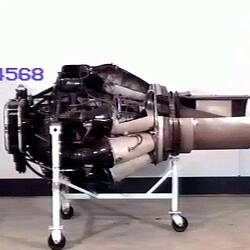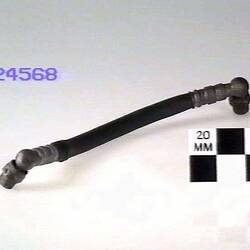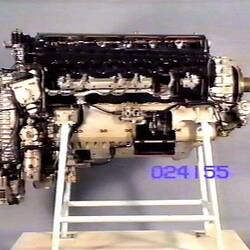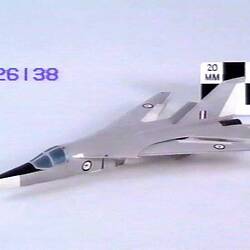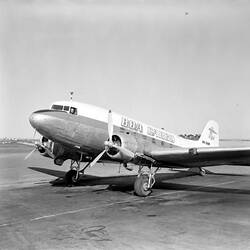Summary
The Rolls-Royce Derwent is a first generation centrifugal-flow jet engine developed from the original W.2B developed by Frank Whittle and Power Jets Ltd. After problems between Power Jets and Rover Ltd which was responsible for production of the W.2B, Rolls-Royce took over production in 1943 including the former Rover factory at Barnoldswick. The Derwent was a production engine designed for the Gloster Meteor twin-jet fighter which entered RAF service in 1944 as the first jet-powered aircraft to see operational service with the Allied forces. In early 1951, the Royal Australian Air Force took delivery of Gloster Meteors to re-equip No. 77 Squadron in Korea. The Squadron had been heavily engaged since the beginning of the Korean War in June 1950 flying Mustang piston-engined fighters. The Meteor Mk.8 was intended to be a more suitable fighter to combat the MiG-15 jet which equipped opposing Chinese and Russian combat units. The MiG-15 was equipped with a Klimov RD-500 engine which was a copy of a Rolls-Royce Nene engine.
The Museum's Derwent engine (serial no. 6358/A626863) was delivered direct from the UK to No. 91 (Composite) Wing RAAF at Iwakuni, Japan on 27 March 1951. The engine was already installed in the starboard nacelle of Meteor A77-587 when it arrived on the aircraft carrier HMS Warrior. It was de-inhibited for flying service on 3 May 1951. A test run of 1 hour, 25 minutes on 9 May was satisfactory but on 11 May a turbine blade failed during a ground run which bent all the other turbine blades and damaged the shroud ring. It was removed from the aircraft and returned to Australia for repair at No. 1 Air Depot, Laverton in Victoria. Repairs were carried out in November 1952. A test run at 1 AD on 18 December 1952 was not satisfactory as the jet pipe temperature was excessive, the fuel pump leaked as did the outer oil casings. The engine was completely dismantled and taken to Aeronautical Research Laboratories and Commonwealth Aircraft Corporation at Fishermans Bend for full proof testing in July 1953. After passing tests for endurance and power curve, the engine was returned to store. It returned to No. 77 Squadron in February 1955, based at Williamtown NSW. It was installed in the port nacelle of Meteor Mk.8 A77-880 on 6 May 1955. It remained with this aircraft until 1 March 1956 when it was removed and returned to store with No. 2 AD at Richmond, NSW. It was then fitted to the port nacelle of Meteor A77-884 on 21 March 1957. It remained with the aircraft until 29 July 1958 when it was removed. The engine was sent to No. 1 AD Laverton on 5 December 1958 for storage. On 19 November 1959 it was transfered to the Museum along with its log book. It was apparently sectioned for display by the RAAF before it arrived at the Museum.
More Information
-
Collecting Areas
-
Acquisition Information
Purchase
-
Manufacturer
-
User
-
Model Name or Number
-
Brand Names
-
Classification
-
Category
-
Discipline
-
Type of item
-
Overall Dimensions
2300 mm (Length), 1250 mm (Width), 1550 mm (Height)
-
Keywords

